Yoga for Everybody: An All-Levels Sequence

Pop culture, from magazine covers to Instagram, is full of young, fit, and flexible yogis. Despite this all-too-pervasive idea of what a “yogi” is, nowadays, we see people of all stripes and sizes practicing; senior citizens, fifty-something executives, and gawky teenagers are rolling out mats next to lithe 20- and 30-somethings.
People also come to the practice at various points in their lives, and, due to multiple factors, progress at different rates. This diversifying of yoga practitioners, in an overall ever-booming industry, is a wonderful thing. It presents new challenges for all involved, however.
It’s true that many studios offer advanced and/or basics classes, classes for varied physical conditions, and certain age brackets. Yet schedules and other logistical issues sometimes prevent students from making it to the classes that would be best for them. And the majority of classes still tend to be “All Levels”—and even that is not always specified. In these classes, in worst cases, more novice students can feel defeated and discouraged as well as be at risk for injury. More experienced students can feel like they’re not learning or being challenged as much as they’d like.
Instructors must do their best to teach to rooms of sometimes very varied ability levels and practice experience. Students are tasked with choosing which of the options teachers may have given (as a method for teaching to those various levels) is best for them on any given day. They must also resist urges to do something just because someone else is, and avoid the trap of self-comparison to fellow students.
On a more positive note, practicing those skills can be true yoga. And most poses (except for highly advanced asana, contraindicated for some bodies and merely inaccessible to many) have something valuable to find for anyone and everyone. Beginners can enjoy the pleasure and growth of accessing poses that they might not have previously, or finding them in new and better ways than how they initially experienced them. More advanced students can key into refinements and nuances that lead them even deeper into yoga practice.
In addition, no matter who you are or how long you have (or haven’t) practiced, some aspects of every pose are ripe for discovery. Certain poses, such as those in the following sequence, are particularly good stand-bys for anyone, at any level, and most any physical condition. We offer them with guidelines to help anyone experience each pose in richer and more beneficial ways.
Crescent Lunge
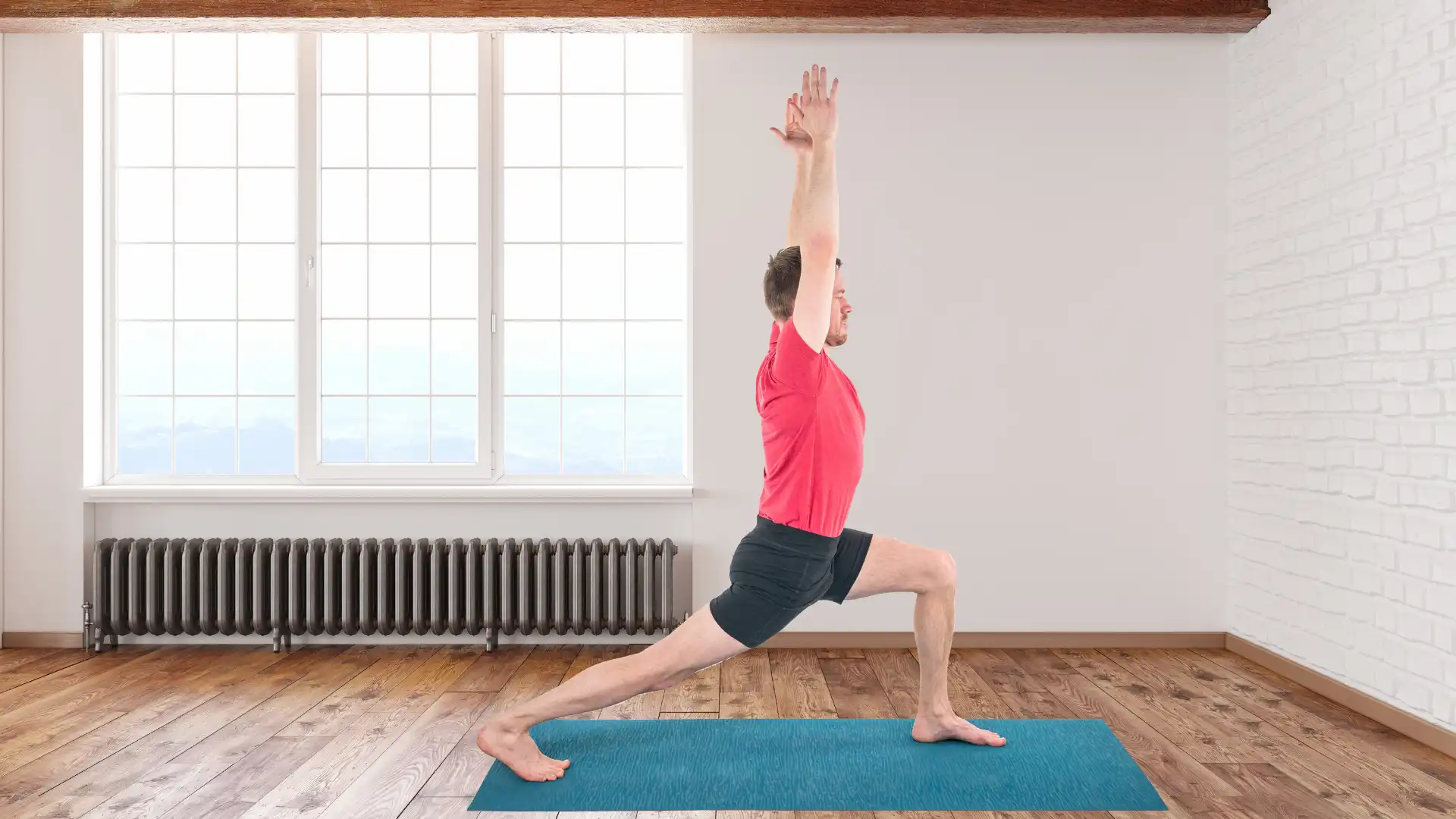
1. Hug your arms a bit straighter, making a number 11 shape around your head, and spin the pinky edges forward.
2. Feel your torso rising out of your hips, like a tree out of its roots; try not to lean forward or backward.
3. Activate the hamstrings of your back leg, and spiral the inner thighs up, to stabilize your lower body in the pose.
To transition, Lengthen your spine forward and further activate the hamstrings of the back leg, rather than kicking off that leg, to lift it with control.
Airplane Pose or Warrior III (Dekasana or Virabhadrasana III)
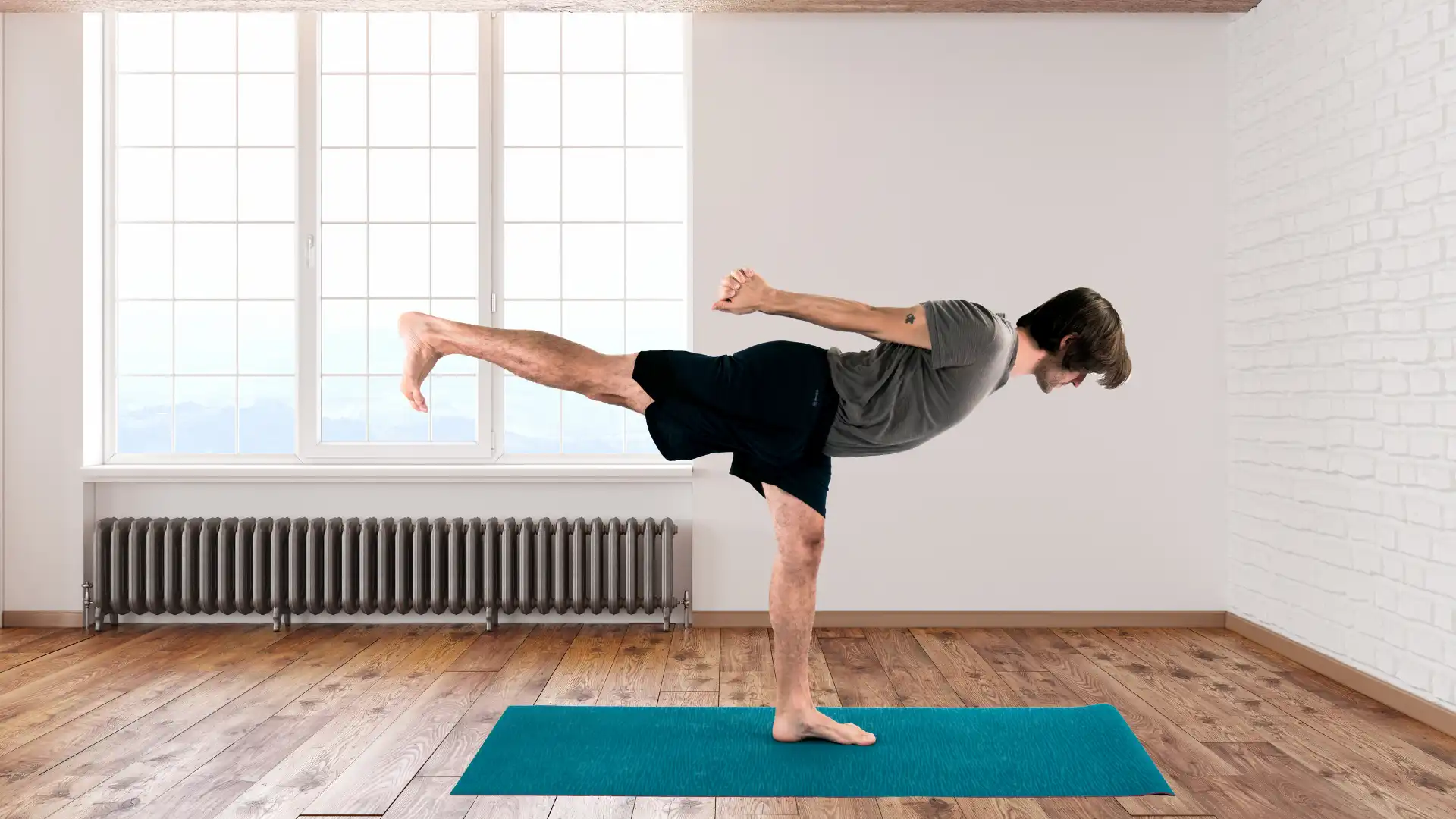
1. Show your inner thigh to the sky, engaging your inner leg to lift it a bit higher as well as dial your toes down.
2).To help that activation, flex your flying foot. That helps the leg lift itself.
3. Fix your Drishti (gaze) to where your neck is long—no wrinkles on the back of your neck, but your throat also open and expansive.
To transition, bend the flying knee, as well as the standing one more, to land softly, the back leg coming down, and the foot in to meet the other.
Standing Forward Fold (Uttanasana)
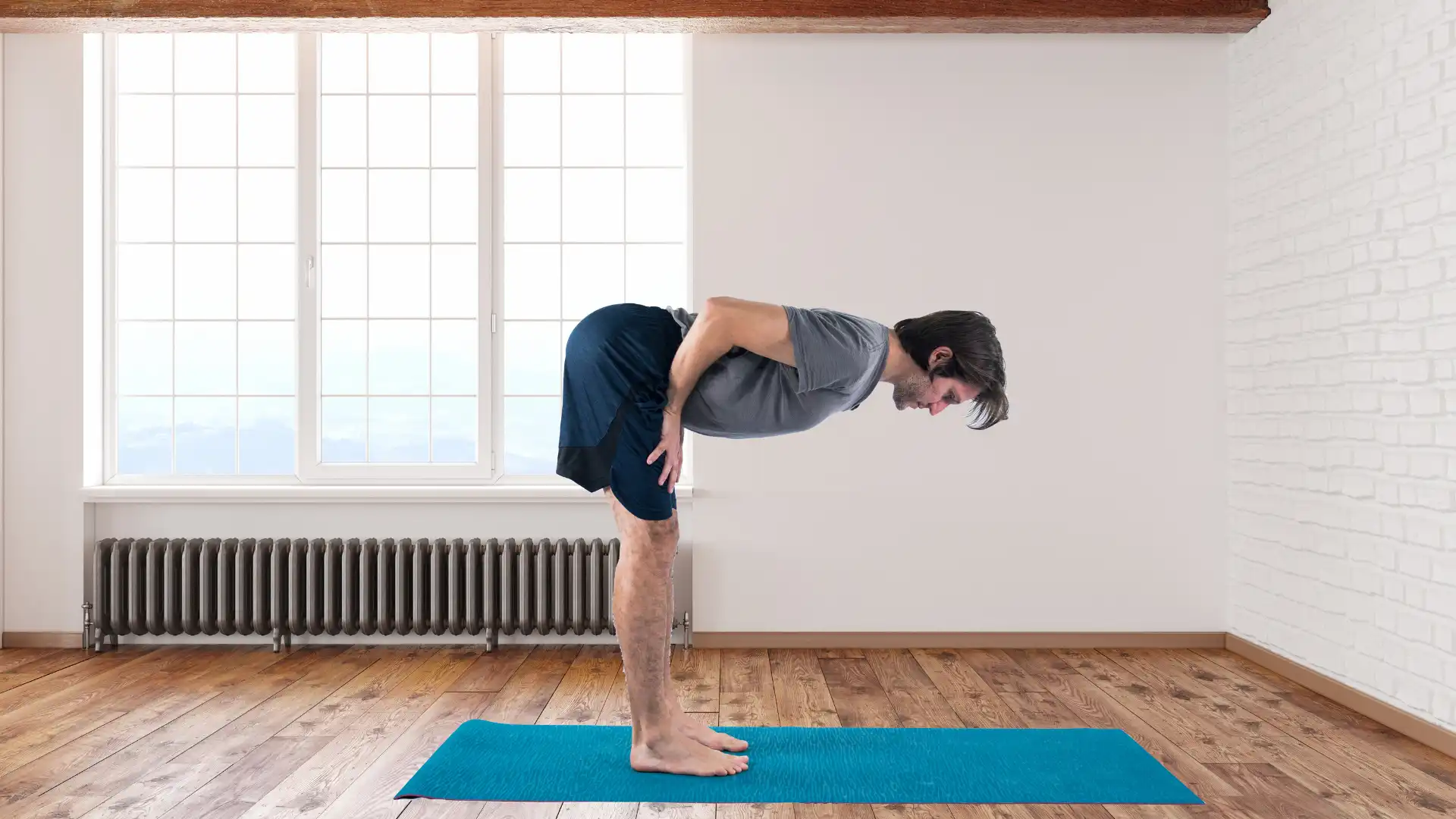
1. Push down through your big toes, but lift up through your insteps.
2. From there, give a micro-bend, or even more, in your knees. That helps prevent hanging on your hamstrings.
3. In contrast, let your head and neck release. Notice any tension in your face, and try to let it exit you on your exhalations.
To transition, plant your hands and bend your knees to lower your bum to your heels, then untuck your toes.
Hero’s Pose (Virasana)
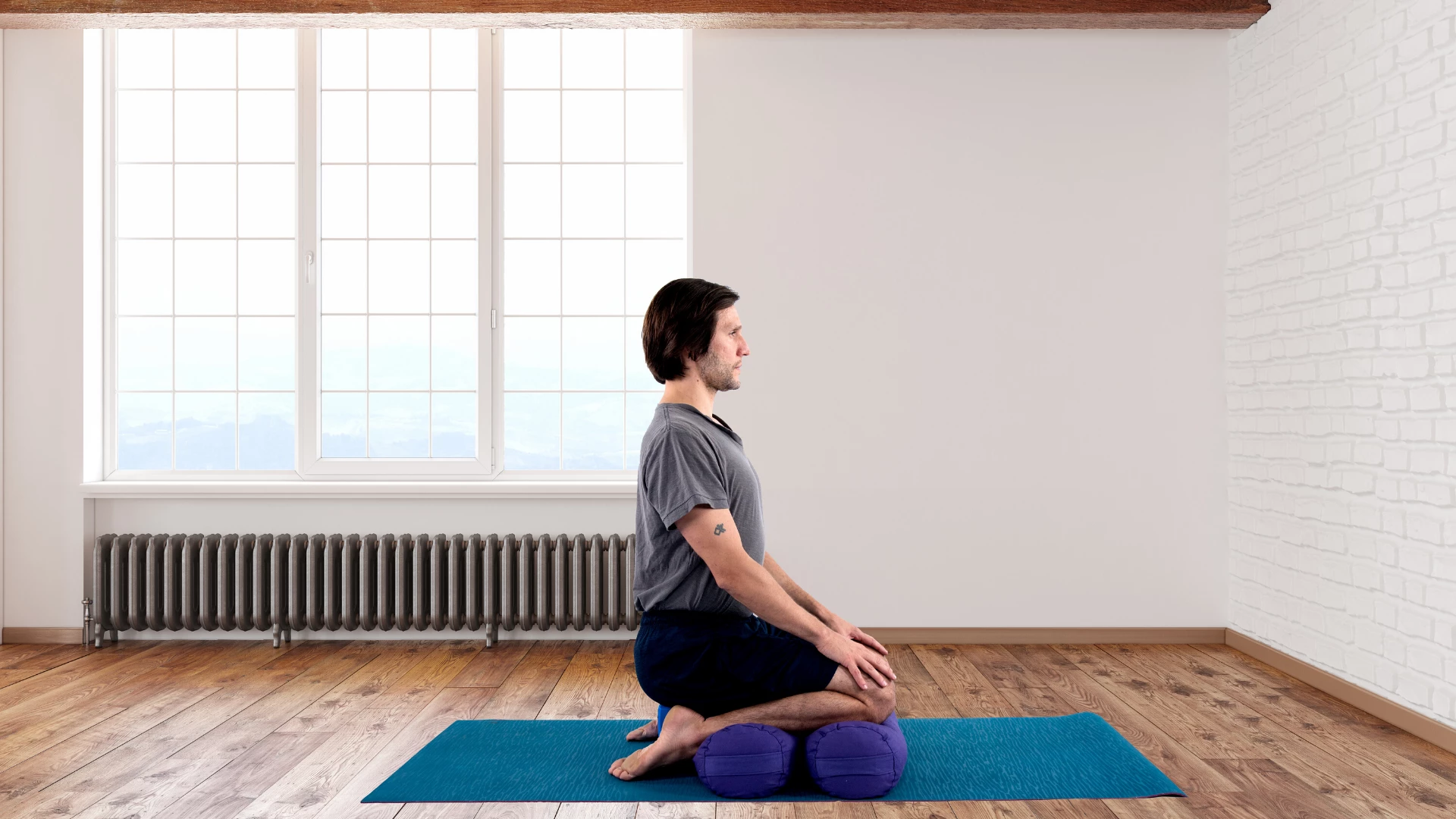
1. Place one or two blocks in between your heels, the widest way, if you feel strain in your legs and/or your tailbone is dipping backward.
2. Feel energy rising out of the top of your head as if your heart were rising up through the roof of your mouth.
3. At the same time, let your tongue relax away from the roof of your mouth, your jaw soften, and your shoulder blades melt across your back.
To transition, place your hands forward again to drop your chest and chin, buttocks high, to then slide onto your belly)
Cobra Pose (Bhujangasana)
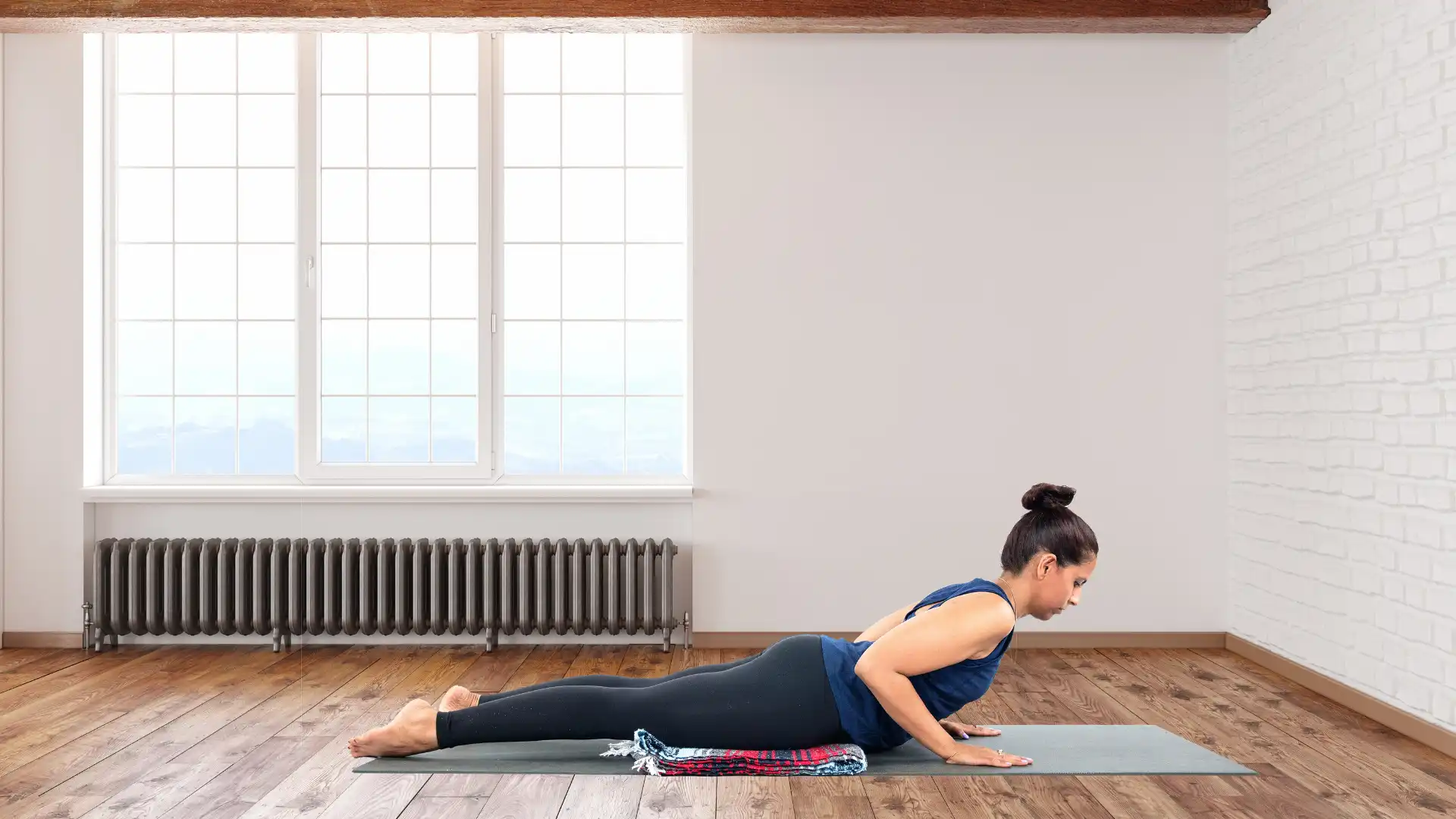
1. Roll your shoulder heads back toward your feet.
2. Scoop your belly up and in, as if trying to pull it away from your mat, to stabilize your spine.
3. Engage your quadriceps so that maybe your kneecaps lift off your mat, yet keep the tops of your feet grounded. Spiral your inner thighs upward.
To transition, lift slightly higher up and pull your elbows inward to just slightly before your shoulders, with your fingers going directly forward, forearms in parallel, like train tracks.
Sphinx Pose (Salamba Bhujangasana)
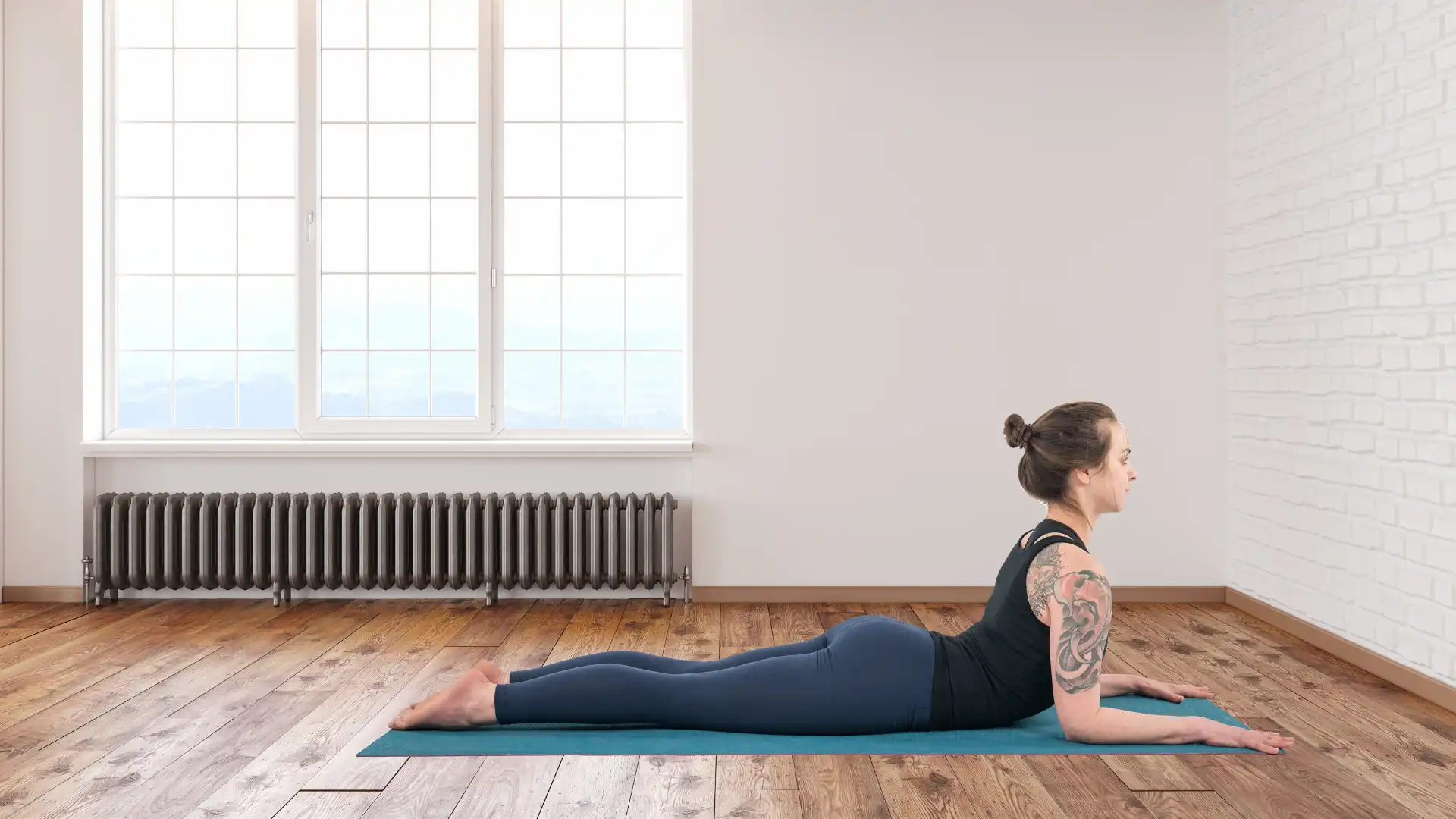
1. Fix your Drishti (gaze) softly forward, and your chin parallel to the floor, to keep your neck long and strong.
2. Notice any tension in your jaw or teeth, and try to release it as you exhale.
3. Feel a slight dragging back in your forearms and hands, which will further lengthen your spine forwards (your hands and forearms most likely won’t move, which is not what we want happening anyway).
To rest, let your elbows wing out and put one hand on top of your other. You’ve made a little pillow for your head, and let your forehead lower onto it (creating Crocodile Pose (Makarasana)). If it feels right for you today, bend your knees and let your knees roll side to side. Try to relax and release everything in your body.
If you prefer a traditional Savasana shape, flip over to be on your back for that. In whichever shape you rest, breathe, and be present. Whatever level of practitioner you are, and no matter what your practice “looked” like, you’ve created something to serve you today. What a gift!
Also, read...
Teaching Svadhyaya: 3 Ways to Encourage Self-Study in Yoga
In Celebration of Gray-Haired Yoga – Busting the Myth of the Yoga Body
Related courses
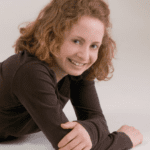
Kathryn Boland is an RCYT and R-DMT (Registered Dance/Movement Therapist). She is originally from Rhode Island, attended The George Washington University (Washington, DC) for an undergraduate degree in Dance (where she first encountered yoga), and Lesley University for an MA in Clinical Mental Health Counseling, Expressive Therapies: Dance/Movement Therapy. She has taught yoga to diverse populations in varied locations. As a dancer, she has always loved to keep moving and flowing in practicing more active Vinyasa-style forms. Her interests have recently evolved to include Yin and therapeutic yoga, and aligning those forms with Laban Movement Analysis to serve the needs of various groups (such as Alzheimer’s Disease patients, children diagnosed with ADHD, PTSD-afflicted veterans – all of which are demographically expanding). She believes in finding the opportunity within every adversity, and doing all that she can to help others live with a bit more breath and flow!




